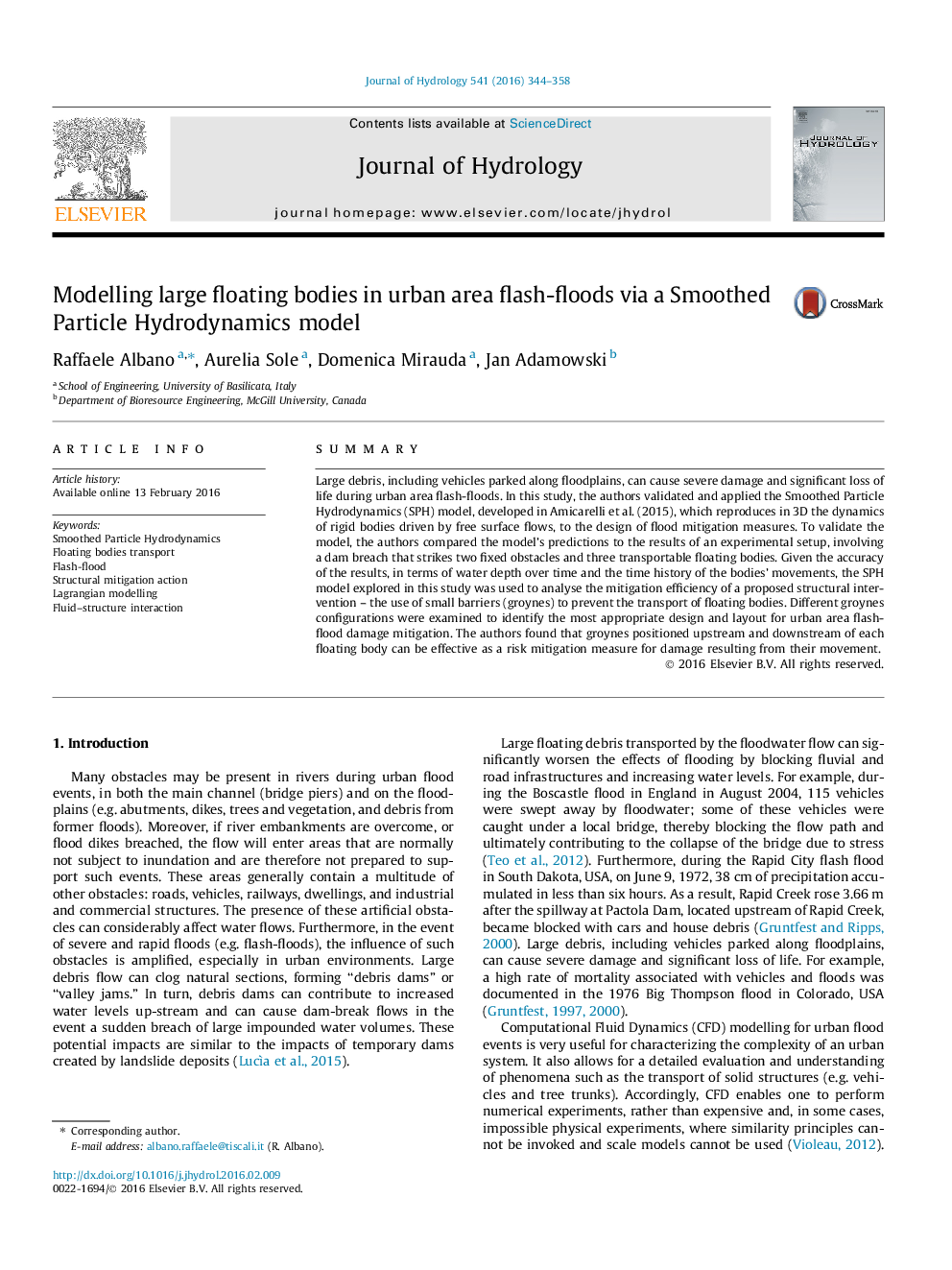| کد مقاله | کد نشریه | سال انتشار | مقاله انگلیسی | نسخه تمام متن |
|---|---|---|---|---|
| 6409379 | 1332869 | 2016 | 15 صفحه PDF | دانلود رایگان |
- A new Smoothed Particle Hydrodynamics (SPH) model was validated via lab experiments.
- The accuracy level was similar to that observed for laboratory experiments.
- The SPH was used to analyse the hydraulic efficiency of 'groynes' (for flood mitigation).
- Different 'groynes' configurations were examined for optimum flood damage mitigation.
SummaryLarge debris, including vehicles parked along floodplains, can cause severe damage and significant loss of life during urban area flash-floods. In this study, the authors validated and applied the Smoothed Particle Hydrodynamics (SPH) model, developed in Amicarelli et al. (2015), which reproduces in 3D the dynamics of rigid bodies driven by free surface flows, to the design of flood mitigation measures. To validate the model, the authors compared the model's predictions to the results of an experimental setup, involving a dam breach that strikes two fixed obstacles and three transportable floating bodies. Given the accuracy of the results, in terms of water depth over time and the time history of the bodies' movements, the SPH model explored in this study was used to analyse the mitigation efficiency of a proposed structural intervention - the use of small barriers (groynes) to prevent the transport of floating bodies. Different groynes configurations were examined to identify the most appropriate design and layout for urban area flash-flood damage mitigation. The authors found that groynes positioned upstream and downstream of each floating body can be effective as a risk mitigation measure for damage resulting from their movement.
Journal: Journal of Hydrology - Volume 541, Part A, October 2016, Pages 344-358
